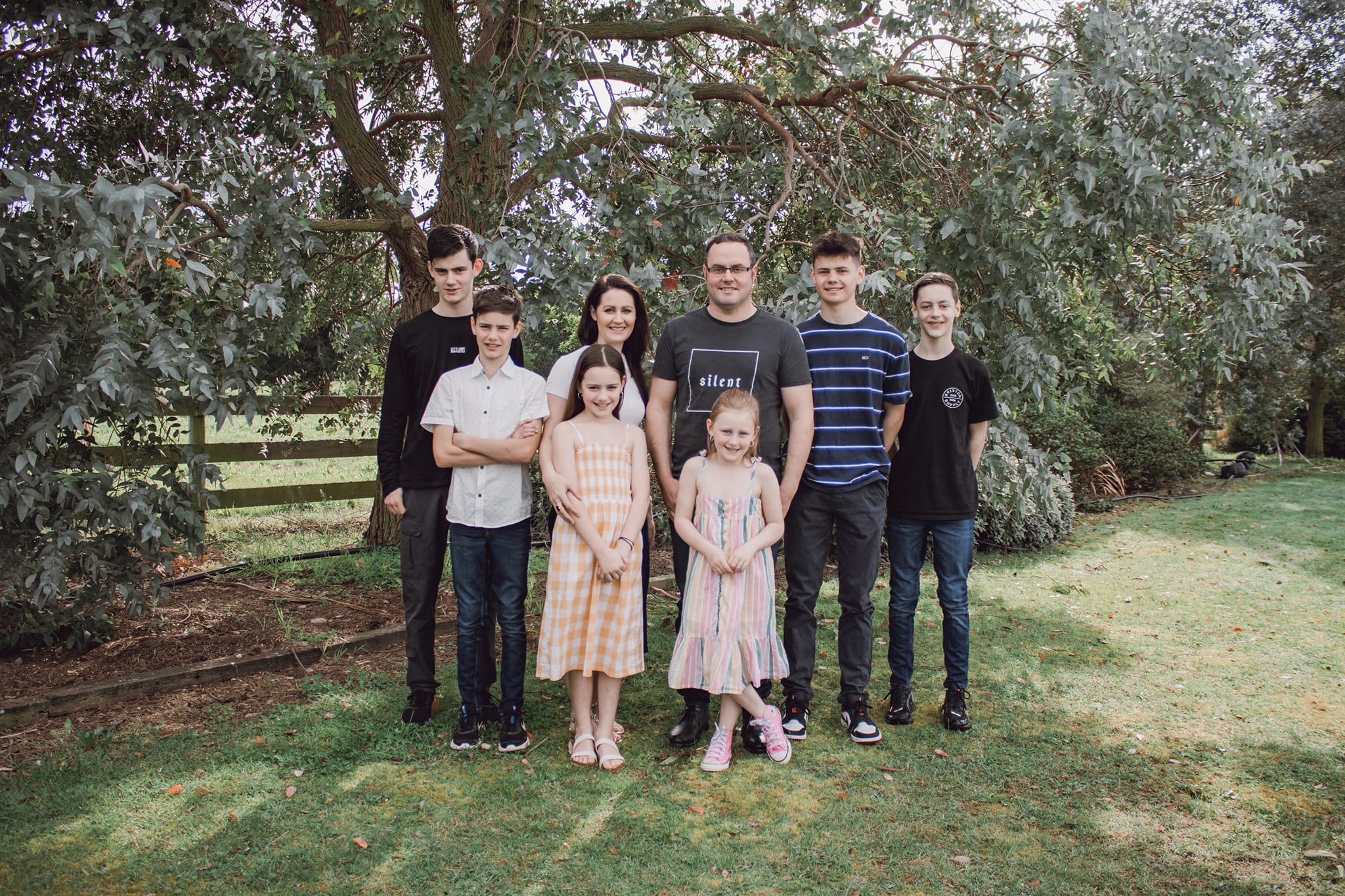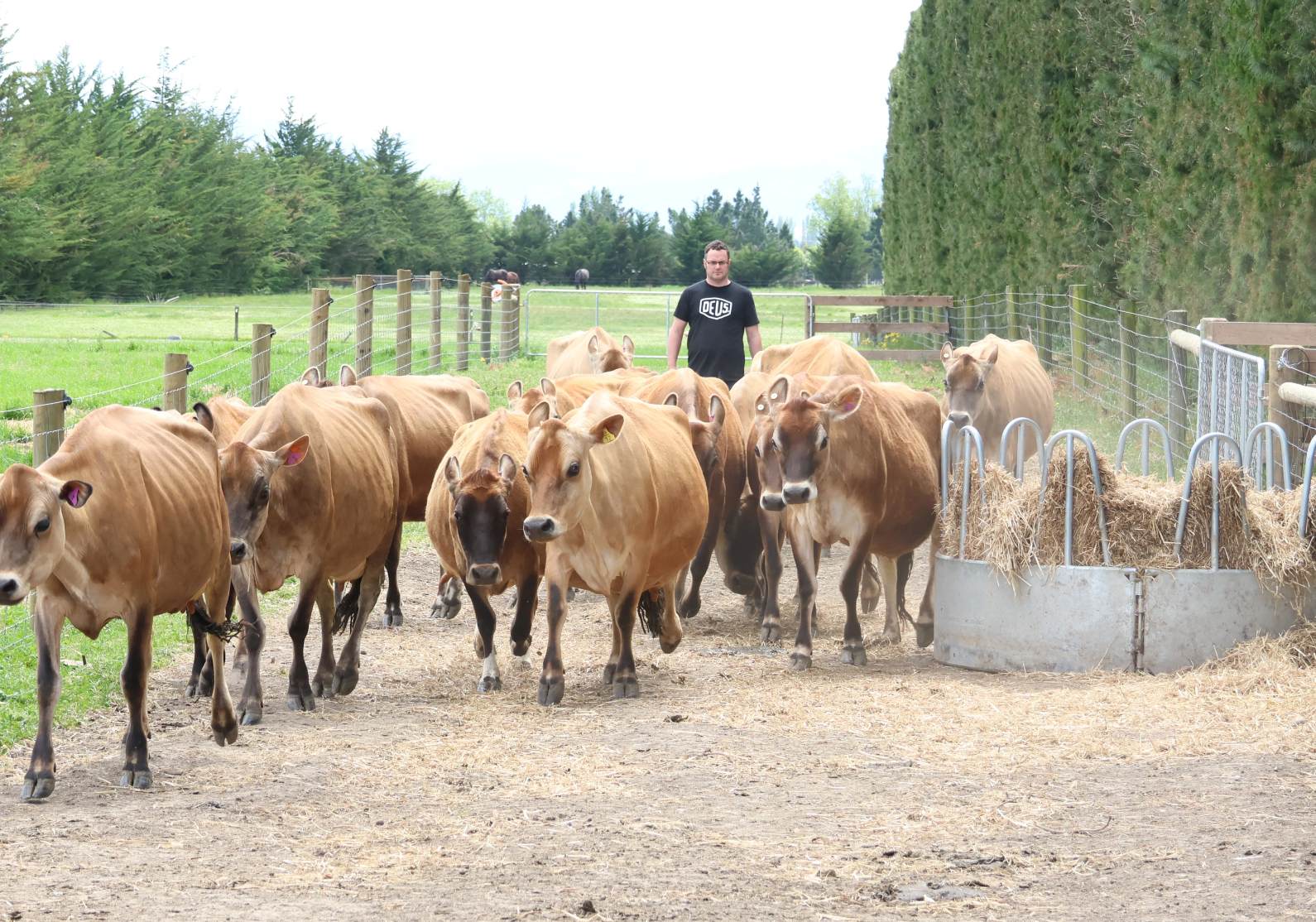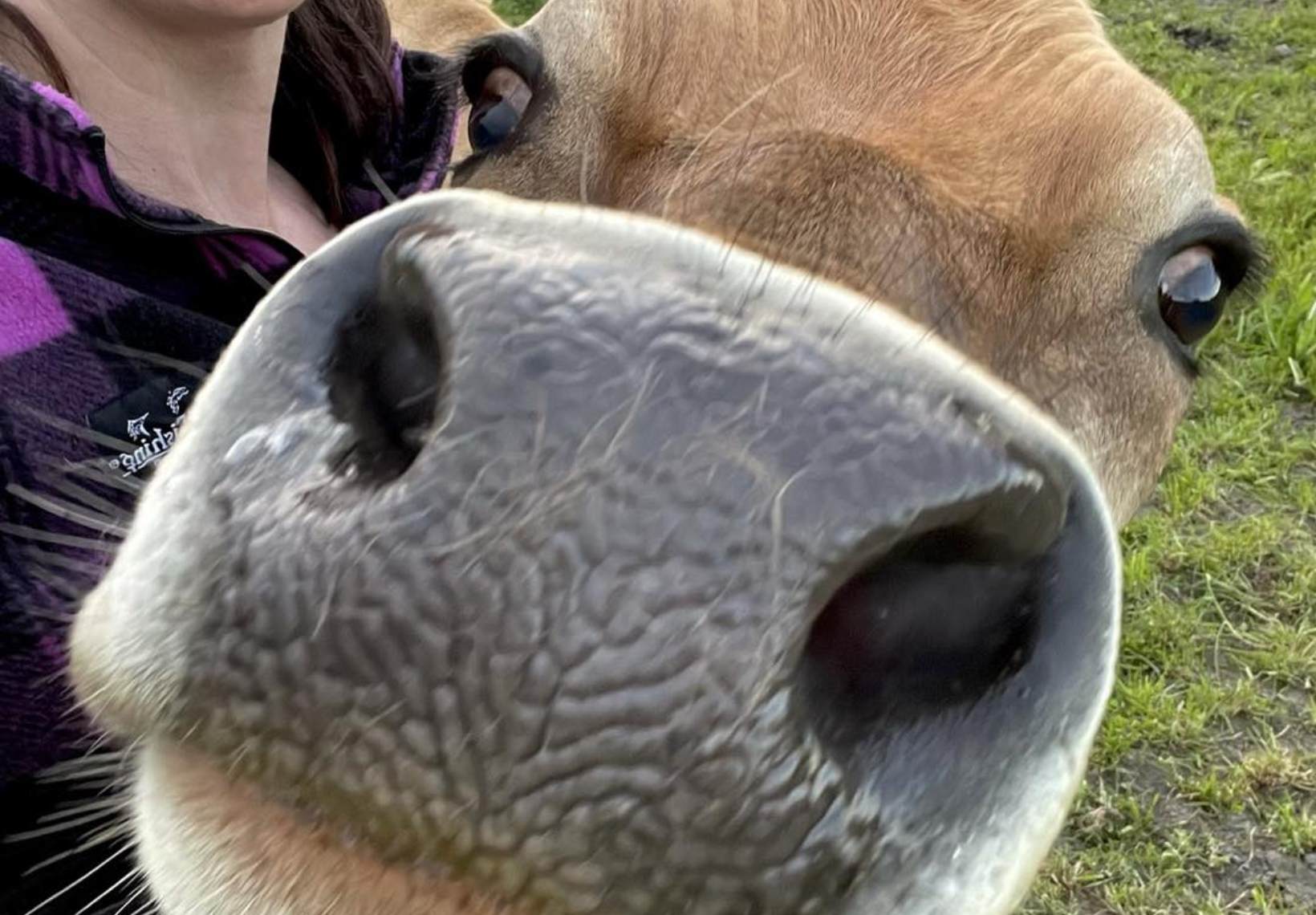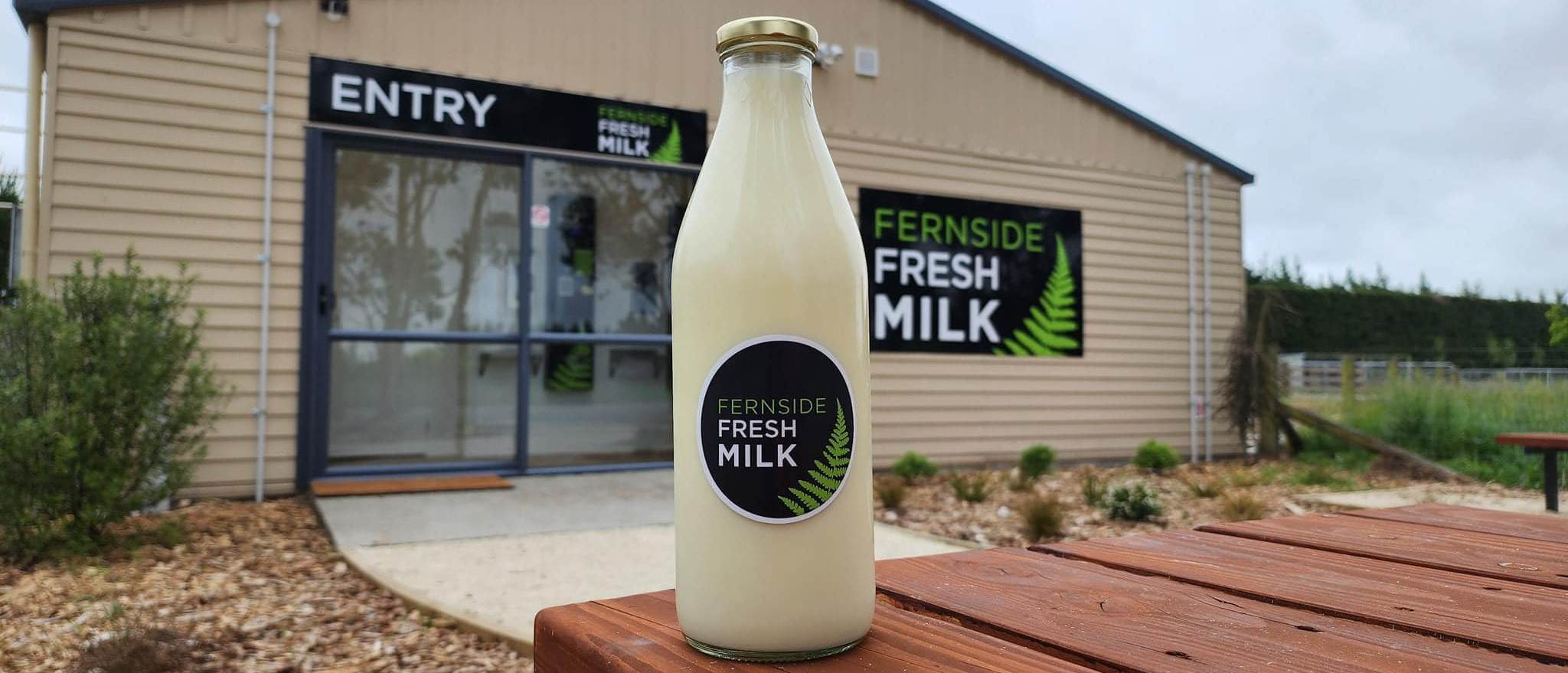Peter and Claire Hansen have blended Peter’s lifelong obsession with registered Jersey show cows into a business model with a difference. Much like the “tiny home” movement, this is a “tiny herd” – a rare phenomenon in New Zealand’s dairy landscape where the average herd size is 440-head.
The beauty of a tiny herd includes a lot of natural advantages for the 16 hand-picked cows, whose milk will fill two 200-litre self-serve milk vending machines every day at the family’s newly minted dairy on-farm at 492 Oxford Rd (just above Fernside school).
The cows are pasture fed, they will only have a short 200m to walk to the dairy each day, and milking takes no more than 20 minutes twice-a-day. Because their milk doesn’t need to be trucked to a milk factory, Fernside Fresh can offer fresher milk than supermarkets could ever achieve.





